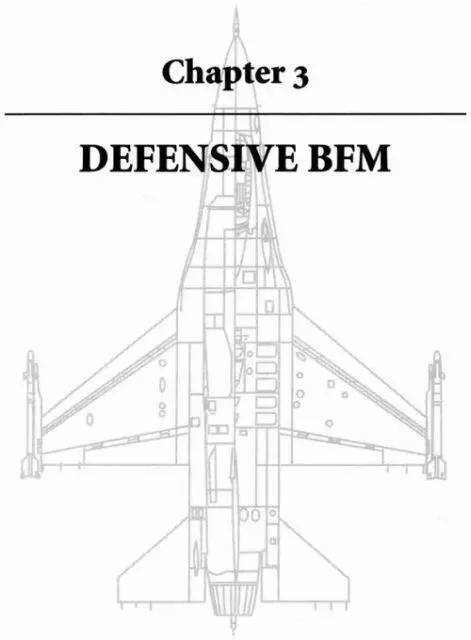Pete Bonanni - The Art of the Kill
Здесь есть возможность читать онлайн «Pete Bonanni - The Art of the Kill» весь текст электронной книги совершенно бесплатно (целиком полную версию без сокращений). В некоторых случаях можно слушать аудио, скачать через торрент в формате fb2 и присутствует краткое содержание. Город: Alameda, CA, Год выпуска: 1993, Издательство: Spectrum HoloByte, Жанр: Прочая справочная литература, на английском языке. Описание произведения, (предисловие) а так же отзывы посетителей доступны на портале библиотеки ЛибКат.
- Название:The Art of the Kill
- Автор:
- Издательство:Spectrum HoloByte
- Жанр:
- Год:1993
- Город:Alameda, CA
- ISBN:нет данных
- Рейтинг книги:4 / 5. Голосов: 1
-
Избранное:Добавить в избранное
- Отзывы:
-
Ваша оценка:
- 80
- 1
- 2
- 3
- 4
- 5
The Art of the Kill: краткое содержание, описание и аннотация
Предлагаем к чтению аннотацию, описание, краткое содержание или предисловие (зависит от того, что написал сам автор книги «The Art of the Kill»). Если вы не нашли необходимую информацию о книге — напишите в комментариях, мы постараемся отыскать её.
Video lessons: http://youtu.be/OCFMX5z-ed4
[C
tables. Best viewed with CoolReader.]
The Art of the Kill — читать онлайн бесплатно полную книгу (весь текст) целиком
Ниже представлен текст книги, разбитый по страницам. Система сохранения места последней прочитанной страницы, позволяет с удобством читать онлайн бесплатно книгу «The Art of the Kill», без необходимости каждый раз заново искать на чём Вы остановились. Поставьте закладку, и сможете в любой момент перейти на страницу, на которой закончили чтение.
Интервал:
Закладка:
The academic lecture on the videotape will polish up your knowledge of offensive BFM. After viewing the offensive BFM section of the tape, you can come back to this book and take the offensive BFM quiz located in “BFM Lesson Plans.”
Chapter 3
DEFENSIVE BFM

I learned the most about fighting defensive BFM while flying as an IP in the F-16A at MacDill AFB. MacDill, as I mentioned earlier, was an F-16 training base. When flying student rides, we seldom fought at full speed, but when we flew sorties against the other IPs, we gave it everything we had. Competition was intense among the instructors, which led to some very rapid learning during BFM rides.
During one particular engagement, I learned the value of keeping your lift vector right on the bandit when performing a defensive turn. This engagement occurred during an instrument check ride. On an instrument check at MacDill, we normally flew down to Southwest Regional Airport near Ft. Myers and did an ILS [21] ILS — instrument landing system
and an SFO [22] SFO — simulated flameout
approach. We then entered an over-water range and did some BFM. After finishing our BFM, we went back to MacDill for a TACAN approach and an overhead pattern. A check pilot chased us through all of those maneuvers and graded our performance.
The guy giving me this particular check ride was named Smitty. Smitty was the Wing Top Gun in bombing and an all-around good flyer. After finishing our work at Southwest Regional, we entered the over-water area and got set up for a perch BFM engagement with me out in front. Smitty found his way back about 7,000 feet, and when we both had about 450 knots, I called “Fight’s on.” Then I started an 8 G defensive turn to the left with my lift vector right on Smitty’s noggin.
Before I go any further, it might be beneficial to explain some of the physical demands that you encounter in the jet when making a defensive turn. I normally describe BFM fights and immediately get engrossed in describing the detailed geometry of the fight, skipping the physical aspects of air combat altogether. Since the chapter you’re about to read is on defensive BFM, it might be useful to briefly describe the physical side of the defensive fight. Defensive BFM is one of the most violent physical activities you can undergo (without dying). You must pull high Gs while keeping sight of an enemy at 6 o’clock. Throughout high G maneuvering, you must fight the Gs in order to keep the blood flow to your cranium. You accomplish this by using an L-1 maneuver: a series of 2- to 3-second grunts against a closed windpipe. This maneuver raises your blood pressure, which keeps the sky blue (rather than black) and your brain working. The L-1 manueuver is slightly different from the older M-1 manuever, in which the windpipe is open during the grunts.
The most difficult task to perform under high G is to check 6 o’clock. In an F-16, it’s much harder to check 6 when turning to the right because the F-16 stick is on the right side of the cockpit. Since you must keep your right hand on the side stick controller during a turn, you have to twist your body to the right and look over your right shoulder. You actually accomplish this by pulling yourself around with your free left hand. (The throttle is in afterburner and usually stays there so your left hand is free.) The F-16 has a “towel rack” located on both sides of the cockpit. These towel racks are used to help you move around the cockpit when the elephant is sitting on your shoulders. In a right-hand defensive turn, for example, you grab the towel rack on the right side of the cockpit with your left hand, pull yourself to the right, and look over your right shoulder. It’s easier to turn to the left to check 6. With your right hand again on the side stick controller, you simply push off the left towel rack, lean to the right, and look over your left shoulder. In the fight with Smitty, I made a left-hand turn. In a left turn, it is relatively easy (as easy as it could be with a 160-pound head) to keep a tally.
Now, back to the fight. I made my turn to the left, and after about 50°, I noticed that Smitty was maneuvering slightly out of plane above me. Great. I rotated my lift vector to keep right on him. He countered by going even higher in the vertical.
Taking a 30,000-pound jet that does not like slow airspeeds in the vertical can be a very unforgiving maneuver. The F-16 flies slow very well as long as you’re careful not to assault the flight control computer limiters. The limiters keep you from putting the aircraft out of control. They work best, however, when the jet is fast and the nose is level or below the horizon. In fact, an F-16 adage is “When you are slow and nose high, don’t assault the limiters.” As you get nose high and slow, a pilot with “Armour Star” hands can fly the jet past the limiters and end up a passenger in a large mass of metal with the flight characteristics of a riding mower. This doesn’t mean that you can’t get slow and nose high in the F-16. It just means that when you do, you better do it right.
When Smitty drove his jet to a position at my high 6 o’clock, I had to make a decision. Should I continue a safe level turn or keep my lift vector on him and challenge him in the vertical? In truth, there was no choice. If I had stayed level, he would definitely have shot me.
The fight had now gone about 90°, and I had 320 knots of airspeed as I pulled straight up with my lift vector right on Smitty. He was now in the hurt locker because he had 100 knots more airspeed on his jet than I did. This gave him a good turn rate (although not much better than mine) but a very large turn radius. Fighter pilots have a saying that “Radius overshoots,” and this is what happened to Smitty. As we both went in the vertical, my smaller turn radius fit inside his bigger turn radius, and he simply flew out in front of me. The only problem I had at this point was controlling the nose of the jet at 130 knots, but luckily for me, Smitty panicked when he saw that I was behind him. He rolled off and went nose low for airspeed. This gave me the chance to pull back down and regain some smash myself. It took about 15 seconds for me to go from a defensive perch setup to a gun kill.
Smitty’s primary mistake was getting turning room in the vertical. Turning room, as you know, is used to solve angle-off and aspect problems. It’s usually best to get your turning room in the horizontal against a high performance fighter. When Smitty went into the vertical, he gained turning room that both pilots could use. Since we had roughly equal turn rates, and since I had a tighter turn radius, I could use the turning room better than he could and gained the advantage.
The point of this story is that even against a good pilot, you can survive if you force him to make a mistake. In order to do this, however, you must know what to do and then execute it flawlessly.
Introduction to Defensive BFM
The stakes are high when you find yourself on the defensive. Defensive BFM is characterized by difficult, high-G combat, flown while you look out the back of the jet. Since most fighter pilots don’t do their best creative thinking twisted around in the cockpit under high Gs, it is best to have a game plan in mind before finding a bandit at your 6 o’clock. We mentioned in Chapter 2 that offensive BFM is not a set of specific moves but rather a series of fluid maneuvers. The same is true when you start with a bandit behind you^There are no magic moves that will move a bandit from your 6 o’clock to your 12 o’clock. In fact, if you fly perfect defensive BFM and the bandit flies perfect offensive BFM, you will get shot down. This statement speaks volumes about defensive BFM.
Читать дальшеИнтервал:
Закладка:
Похожие книги на «The Art of the Kill»
Представляем Вашему вниманию похожие книги на «The Art of the Kill» списком для выбора. Мы отобрали схожую по названию и смыслу литературу в надежде предоставить читателям больше вариантов отыскать новые, интересные, ещё непрочитанные произведения.
Обсуждение, отзывы о книге «The Art of the Kill» и просто собственные мнения читателей. Оставьте ваши комментарии, напишите, что Вы думаете о произведении, его смысле или главных героях. Укажите что конкретно понравилось, а что нет, и почему Вы так считаете.












